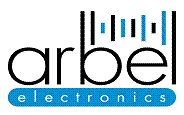
Tel: 01437 532266
Arbel moves to SMD printed circuit board construction


What took us so long?
For nearly 30 years, most of our products have been individually hand soldered by expert technicians, Including some limited SMD work.
It can be eye staining and tedious work at the best of times, but as circuit boards have become more complex and components even smaller, the time has come to move into SMD design and construction.
SMD stands for Surface Mount Device. Unlike conventional electronic components, which are relatively large and have legs soldered through holes drilled in the circuit boards, SMD components can be extremely small and are fabricated with pads that are soldered automatically to their corresponding positions on the printed circuit board.


The size of some of the components can be seen in this photograph. A microchip, containing a fully functional GPS receiver, that sits comfortably on a technicians little fingernail! Components have become so small, that in some cases it has become impossible and pointless to print on their identification marks and values. Best not to mix them up or drop them on the floor! Imagine trying to hand solder all the tiny pads on this component!
Fortunately, with miniaturisation has come the development of some extremely interesting robot machinery that doesn't get tired or have eyestrain. Pick and place machines with automatic flow solder ovens have taken over in the PCBs assembly business and the circuit boards of our our new range of controls will be assembled by a robot. The larger conventional components will still be hand soldered. Take a look below at a pick and place machine in operation. This video is NOT speeded up.
This video shows an 8 head Phillips Topaz SMD placement machine in operation. The heads are all vacuum driven and the machine is programmed to select the appropriate component from a carousel of components held on reels. Each component is then placed onto the printed circuit board, which has been coated with solder flux paste, applied through a stainless steel solder mask plate.
Once completed, the boards move automatically into a solder reflow oven before being chemically cleaned and stacked for inspection.
This is an extremely accurate and reliable process, that has brought consumer electronics and industrial equipment with benefits, reliability and at reduced costs that would have seemed like a dream to engineers and manufacturers a few years ago.
For an in-depth explanation as to how a pick and place SMD machine works go to:-